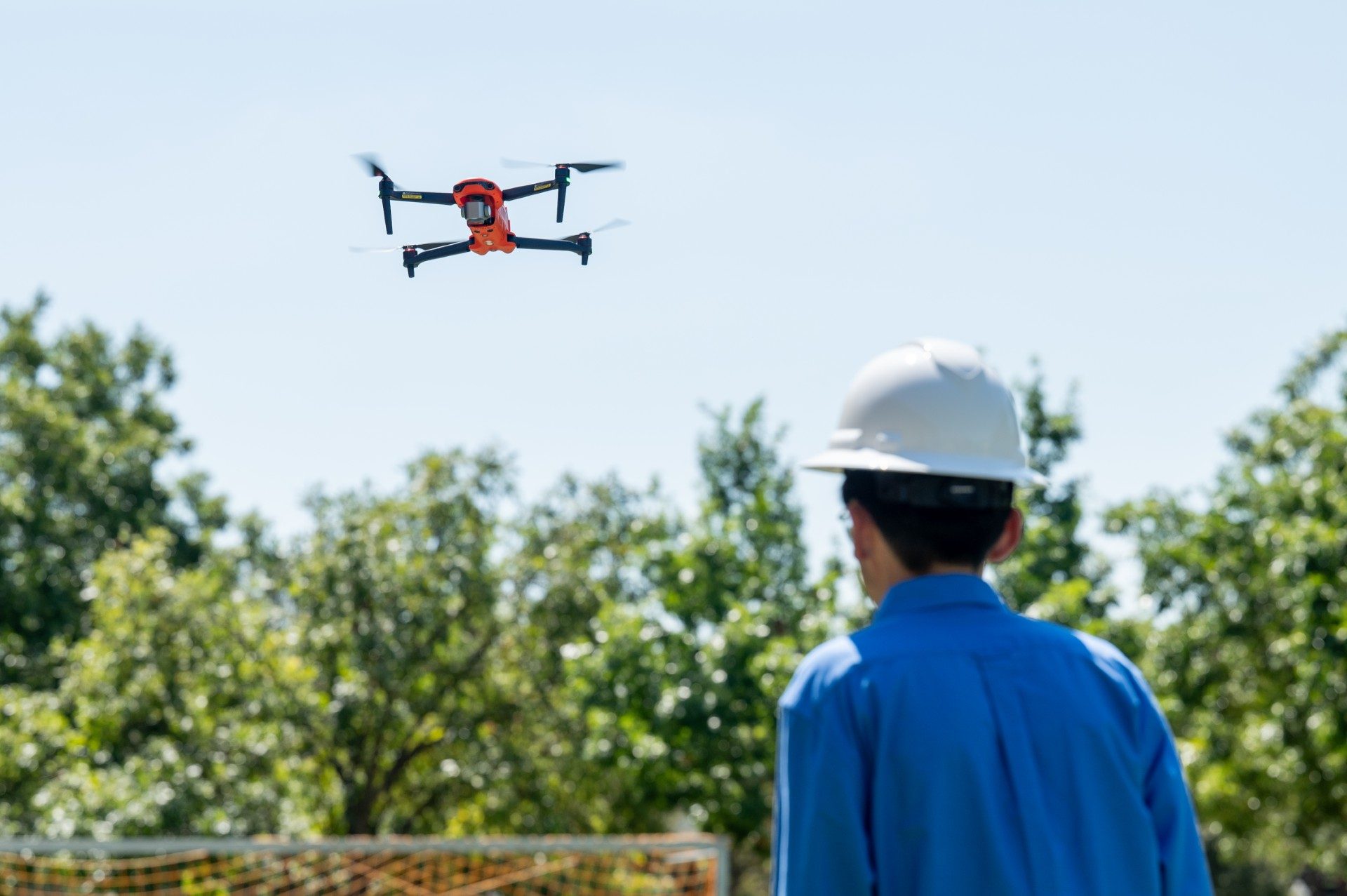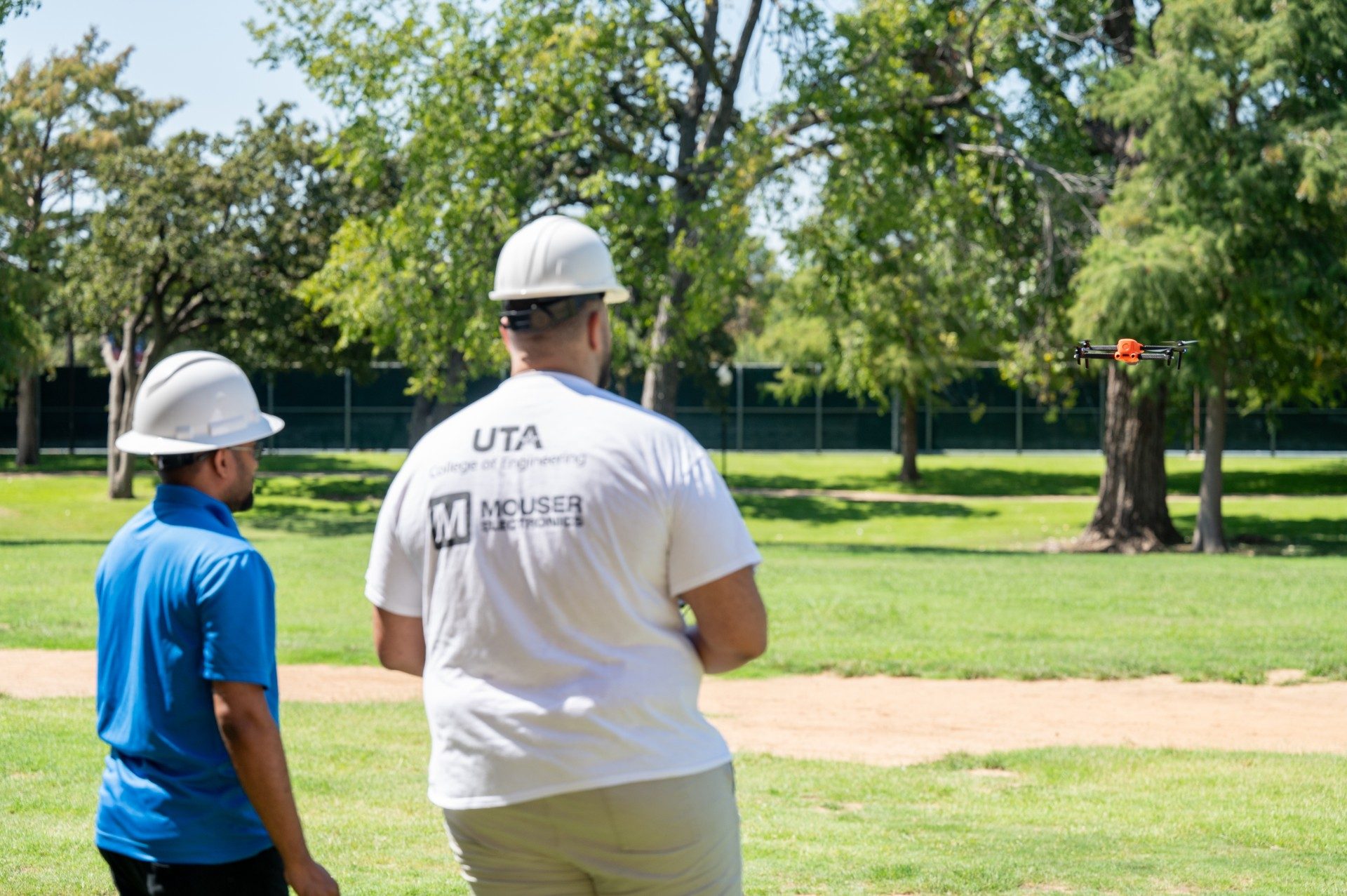Hands-on Flight Experience and FAA Certification Prepare Students for Careers in Civil Engineering and Beyond
by DRONELIFE Features Editor Jim Magil
Students enrolled at a new drone training program at the University of Texas at Arlington will have the opportunity to not only study to earn a Part 107 license, but will also get hands-on experience piloting UAVs.
The instructor for the program, Zhe Yin, a UT Arlington assistant civil engineering professor, said the program was launched as part of the FAA’s Unmanned Aircraft Systems Collegiate Training Initiative (UAS-CTI). Its main objective is to train the next generation of drone pilots to pass the Part 107 exam in order to obtain a license to fly a drone commercially.
“In the meantime, they can complete 15 hours of flying with us, and also get some experience, because we all know that FAA doesn’t require flight training,” to qualify for Part 107 certification Yin said.

One of seven UAS-CTI programs offered in the state of Texas, the UT Arlington course, “Drones and Advanced Construction Technology,” also is the only one designed to equip students to work with drones in the civil engineering field. The course is offered to senior-year engineering and architecture engineering students as a technical elective.
In order to give each student the flight time offered as part of the program, the size of class is limited to 20, 15 civil engineering students and five architecture engineering students.
Flight training is conducted on a football field near the building where the indoor instruction takes place, which makes it easy to switch to indoor instruction in the event of inclement weather.
Each semester, the students are divided into four groups of five students each. Two groups will receive one-and-a-half hours of flight instruction from Yin and an assistant, while the other half of the class hears a lecture focusing on Part 107 licensing requirements. Then the roles are switched with the students who had heard the lecture getting their required flight times and vice versa.
Yin said he invites guest lecturers from local industries to address the class. These industry professionals also invite students to their respective job sites, where the students can gain real-world experience in drone operations.
“In the flying sessions I will let them to learn how to fly the drone, how to maneuver, and how to complete some tasks specifically designed for construction applications,” Yin said. For example, the students will learn to do a 2D mapping project at a job site as well as how to maneuver the drone around objects in order to create 3D models.
At the end of the course, in addition to passing the Part 107 exam and earning their UAV pilot’s license, each student is awarded with an FAA-authorized Construction Drone Professional Certificate.
For its drone instruction program, UT Arlington deploys six Autel UAVs and one EXO Blackhawk 3, which is used as a backup vehicle.
Interestingly, in a field that remains largely male-dominated, the gender make-up of Yin’s current class of students is almost 50-50, with nine female students and 11 males. And Yin added that the women in the class are more than keeping up with the men. “Yesterday we were flying and all of a sudden, the girls wanted to start a competition with the boys. They are actually doing better than the boys,” he said.

Yin said that since the class was first announced, a large number of students at the school have expressed an interest in drone operations. And since the drone construction program is limited to a select group of students, he thought the school should offer opportunities to those students who are not eligible for the course.
“I understand that not everybody will have the opportunity to fly the drone, so we created a drone club,” he said. Participants in the drone club get the opportunity to engage in hands-on flying sessions. For graduate students looking to enhance their drone-operating skills as well as their understanding of virtual reality platforms, the club also offers drone simulation sessions. Students can develop drone simulation programs and upload them into a set of VR goggles to fly virtual drone.
The club also offers a Part 107 preparation workshop, a less extensive version of the instruction offered in the formal drone training program. As in that program, the drone club’s Part 107 workshop will include the participation of representatives from local drone-related businesses.
“At certain level, we’re going to offer that for free for them. This is to provide some opportunities for the student who does not have the opportunity to enroll in the class,” Yin said. “Sometimes people want to see, ‘Hey, how can I fly a drone? Let me just try to fly.’”
In another effort to expand drone-related educational opportunities in the North Texas region, UT Arlington plans to build a $2.3 million, outdoor netted drone training facility. The Maverick Autonomous Vehicle Research Center (MAVRC) will be located at the UT Arlington Research Institute (UTARI) in Fort Worth, with a planned completion date of January 2025.
Read more:
- Congressional Testimony: Regulation, Education Needed for Drone Industry to Scale
- Bee Cave, Texas: Fully Autonomous Drone First Responder Program Set to Launch
- Windracers’ ULTRA Drones to Aid Critical Antarctic Research with NORCE
 Jim Magill is a Houston-based writer with almost a quarter-century of experience covering technical and economic developments in the oil and gas industry. After retiring in December 2019 as a senior editor with S&P Global Platts, Jim began writing about emerging technologies, such as artificial intelligence, robots and drones, and the ways in which they’re contributing to our society. In addition to DroneLife, Jim is a contributor to Forbes.com and his work has appeared in the Houston Chronicle, U.S. News & World Report, and Unmanned Systems, a publication of the Association for Unmanned Vehicle Systems International.
Jim Magill is a Houston-based writer with almost a quarter-century of experience covering technical and economic developments in the oil and gas industry. After retiring in December 2019 as a senior editor with S&P Global Platts, Jim began writing about emerging technologies, such as artificial intelligence, robots and drones, and the ways in which they’re contributing to our society. In addition to DroneLife, Jim is a contributor to Forbes.com and his work has appeared in the Houston Chronicle, U.S. News & World Report, and Unmanned Systems, a publication of the Association for Unmanned Vehicle Systems International.

Miriam McNabb is the Editor-in-Chief of DRONELIFE and CEO of JobForDrones, a professional drone services marketplace, and a fascinated observer of the emerging drone industry and the regulatory environment for drones. Miriam has penned over 3,000 articles focused on the commercial drone space and is an international speaker and recognized figure in the industry. Miriam has a degree from the University of Chicago and over 20 years of experience in high tech sales and marketing for new technologies.
For drone industry consulting or writing, Email Miriam.
TWITTER:@spaldingbarker
Subscribe to DroneLife here.







Leave a Reply